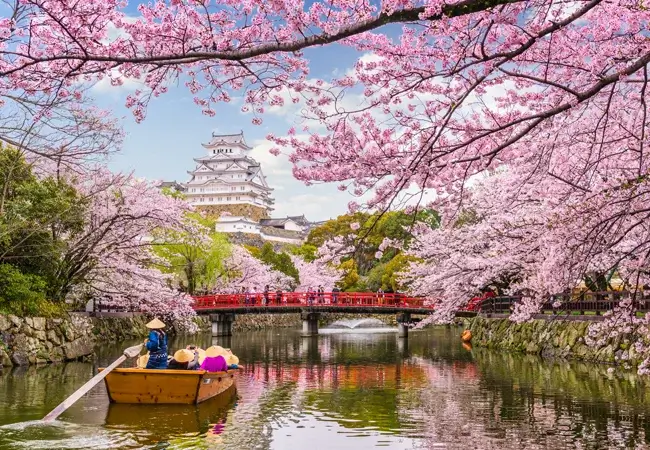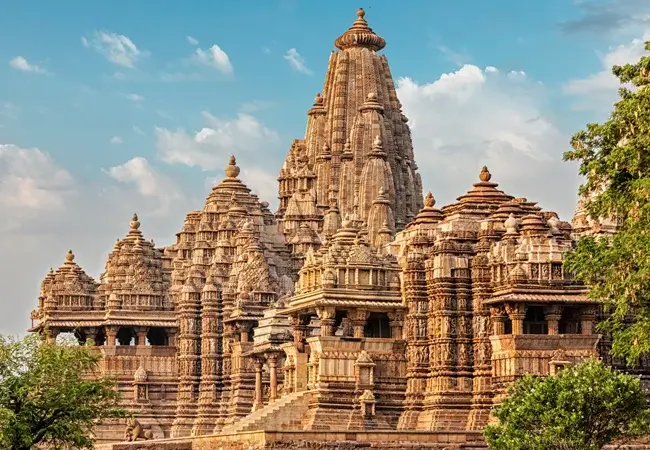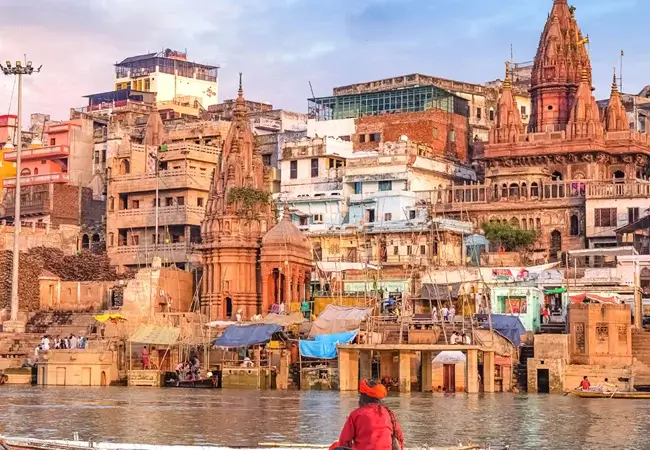There are several religious places in India that can be visited by people of all ages and discover the spiritual side of their personalities. We often think that religious places are only for people who are on the right side of sixty. But the thinking process of people has changed to a great extent recently, especially among the youth. Nowadays, the youths are also equally interested in visiting religious locations just like old people. Hence, if you are planning to visit one such religious place to attain some enlightenment, then Rameswaram can be the perfect destination for you.
Rameswaram is located on Pamban Island which is separated from mainland India by the Pamban channel and is situated at a distance of approximately 40 km from Mannar Island, Sri Lanka. People also call Pamban Island Rameswaram Island which remains connected to mainland India by the Pamban Bridge. This region is considered to be one of the holiest places in India, and is also part of the Char Dham pilgrimage.
According to Sanskrit epic Ramayana, Lord Rama had built this bridge from this region across the sea to Lanka to rescue his wife from her abductor Ravana. There is a temple in Rameswaram which is dedicated to Lord Shiva and occupies the center of the town. Both the temple and the town are holy pilgrimage sites for Shaivas along with Vaishnavas.
Sri Ramanathaswamy Temple is one of the most popular religious sites in India and is a Hindu temple dedicated to Lord Shiva located on Rameswaram Island. Moreover, it is also one of the twelve Jyotirlinga temples. This temple is known to undergo expansion during the 12th century by the Pandya Dynasty and its principal shrine’s sanctum was renovated by Jeyaveera Cinkaiariyan, along with his successor Gunaveera Cinkaiariyan (monarchs of the Jaffna Kingdom). Besides, Ramanathaswamy Temple also holds the record of having the longest corridor among all temples in India, under the supervision of King Muthuramalinga Sethupathy.
According to mythological accounts, the Lingam of Ramanathaswamy (Lord Shiva) was worshipped by Lord Rama before he crossed the bridge to the present-day island of Sri Lanka. There are two lingams inside the temple- one built by Lord Rama using sand that is mainly worshipped by the pilgrims and is considered to be the main deity and the one that was brought by Lord Hanuman from Kailash called Vishwalingam. Lord Rama instructed that the Vishwalingam needs to be worshipped first because it was brought by Lord Hanuman and people still follow this tradition.
Separate shrines are present in Sri Ramanathaswamy Temple for Lord Shiva and his consort goddess Parvathavardhini. Moreover, separate shrines are also present for the goddess Vishalakshi, the utsava images, sayanagriha, Vishnu, and Ganesha. The presence of a wide number of halls inside this temple also adds to its charm. The names of some of the halls are Anuppu Mandapam, Sukravara Mandapam, Setupati Mandapam, Kalyana Mandapam, and Nandi Mandapam.

This temple is situated just a distance of 12 km from the main city. Moreover, it is considered to be one of the popular places to visit in Rameshwaram. This temple remains surrounded by the sparkling water of the Bay of Bengal as it is situated on an island. The locals believe that Swami Vivekananda also visited this temple before he started his journey to Chicago which was an important historic event.
Moreover, this temple is believed to be more than 1000 years old and is also quite popular for the fact that it withstood the massive cyclone of 1964 which ruined the entire town of Dhanuskadi. This temple survived the cyclone but all the other buildings in the town suffered a lot of damage that turned this religious town into a ruin.
This temple is situated just a few kilometers away from the revered Sri Ramanathaswamy Temple and is dedicated to Lord Hanuman-the monkey God. According to legends, this is the region where Lord Hanuman revealed his five-faced avatar. There are several stories associated with this temple. According to one, the faces are representative of five gods, namely Hanuman, Narasimha, Adivaraha, Hayagriva, and Garuda. The main deity of the temple always remains covered in vermillion.
Moreover, the shrine also houses statues of Lord Rama and Goddess Sita, which were installed here in the year 1964. Outside the temple, floating stones are present that were used to build the bridge called Sethu Bandanam across the sea, from Rameshwaram to Lanka.
This Tirtham is situated just at a distance of 1 km away from the Sri Ramanathaswamy Temple and is also close to Rama Tirtham, Sita Tirtham, and Panchmukhi Hanuman Temple. Besides, it is also close to the temple dedicated to Lord Lakshmana. Lakshmana Tirtham has been built in the Dravidian style of architecture and also has an attractive structure with carved pillars depicting statues of deities and instances from Ramayana. Also, there are carved idols of Lord Rama, Lord Lakshmana, and Goddess Sita present. These carvings tend to represent the immense devotion of Lord Lakshmana towards Goddess Sita and Lord Rama.
It is considered to be one of the most visited tirtham, located on the eastern beach corner of Sri Ramanathaswamy Temple. It is the only tirtham of the temple that is situated outside the temple complex and has also been mentioned in sacred texts such as Skanda Purana, Narada Purana, and Sethu Purana.
Agni Tirtham is an important part of any Rameshwaram tour. It is also said that the devotees first take bath in its holy water and then begin their pilgrimage to Rameshwaram. Although devotees remain present here throughout the year to pay their visits, the most auspicious days considered to take bath here are on the new moon days and full moon days.
Also known as Adam’s Bridge or Rama’s Bridge, the Rama Setu is a chain of natural limestone shoals between Pamban Island (also called Rameshwaram Island), off the south-eastern coast of Tamil Nadu and Mannar Island, off the north-western coast of Sri Lanka. The ancient Sanskrit epic Ramayana, in the Yuddhakanda, mentions a bridge constructed by Lord Rama with aid from an army of Vanaras (monkeys or forest-dwellers) to reach the island of Lanka and rescue his wife Sita from Ravana. In popular belief, Lanka is equated to present-day Sri Lanka.
There are multiple theories exist regarding the formation of the bridge. According to one theory, the Palk Strait and the Gulf of Mannar were once part of the Kaveri River basin. Due to long-term tectonic movements, the outline of the region including Adam’s bridge formed, and the particular shapes of these landforms contributed to coral growth. The coral trapped sand, which led to a discontinuous shoreline that is now called Rama Setu.
Jatayu Tirtham is another important pilgrimage site dedicated to Jatayu, considered to be the King of birds, who was also an ardent and loyal devotee of Lord Rama. The legend behind this temple is associated with instances from the ancient sacred text Ramayana. According to popular belief, when the demon Ravana kidnapped Goddess Sita, Jatayu had helped Lord Rama by fighting the demon. During the fight, Jatayu’s wings were slashed because of this it fell and died. Afterward, Lord Rama had buried Jatayu body at the place where a temple stands now dedicated to Jatayu. It is said that the entire place where it was buried, turned into vibhuti, which is the holy ash that is obtained after yagnas by the saints.
This beach is not only blessed with aesthetic beauty but also possesses a rich cultural background. It is considered to be one of the Tirtham (holy water body) spots of 64 known ones. Thus, pilgrims gather here every year to take a dip and purge themselves of all evil. It is situated just a distance of 6 km from the Rameshwaram main bus stand. Besides, it is also popular for its pure water spring beside the sea. Devotees connect its existence to a mythological legend from the epic Ramayana. After rescuing Goddess Sita and bringing her back to Rameshwaram from Sri Lanka, Lord Rama performed rituals by installing a Shiva linga on the spot. When Sita said she was thirsty, Rama shot an arrow into the sea, and from there emerged a spring bringing forth pure water. The Shiva lingam is named Thryambakeshwar, and there is a Lord Shiva shrine near Villoondi Tirtham. Villoondi means “the place pierced by the arrow” and tirtham means “sacred water”.
The best time to visit Rameswaram is from October to April because the weather remains pleasant here during these months. Winters are pleasant here because the minimum temperature touches nearly 17oC.














